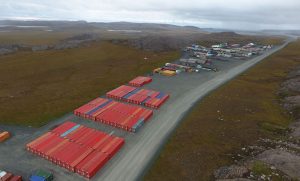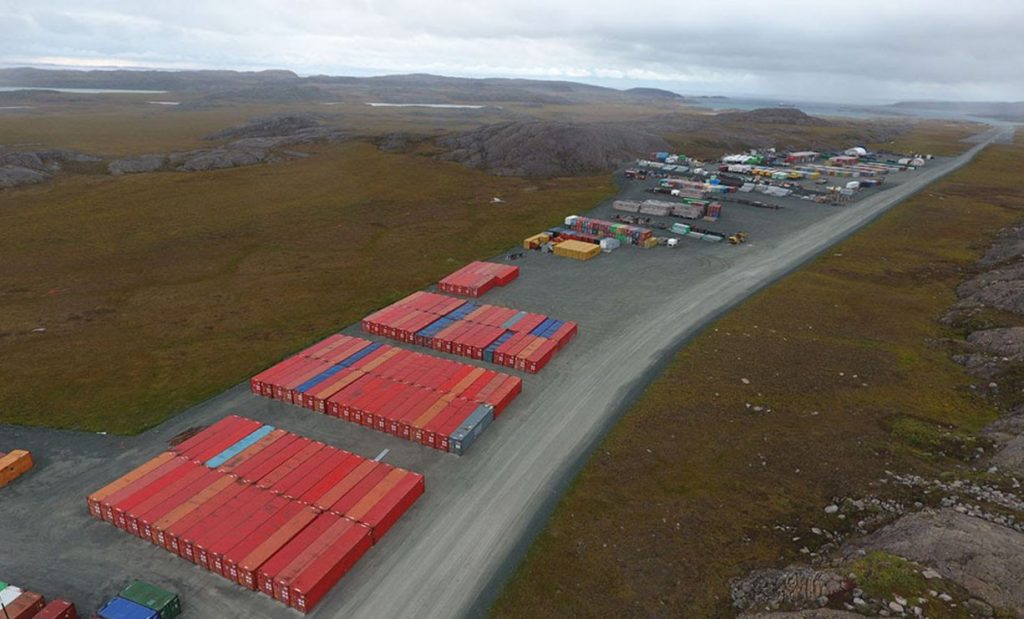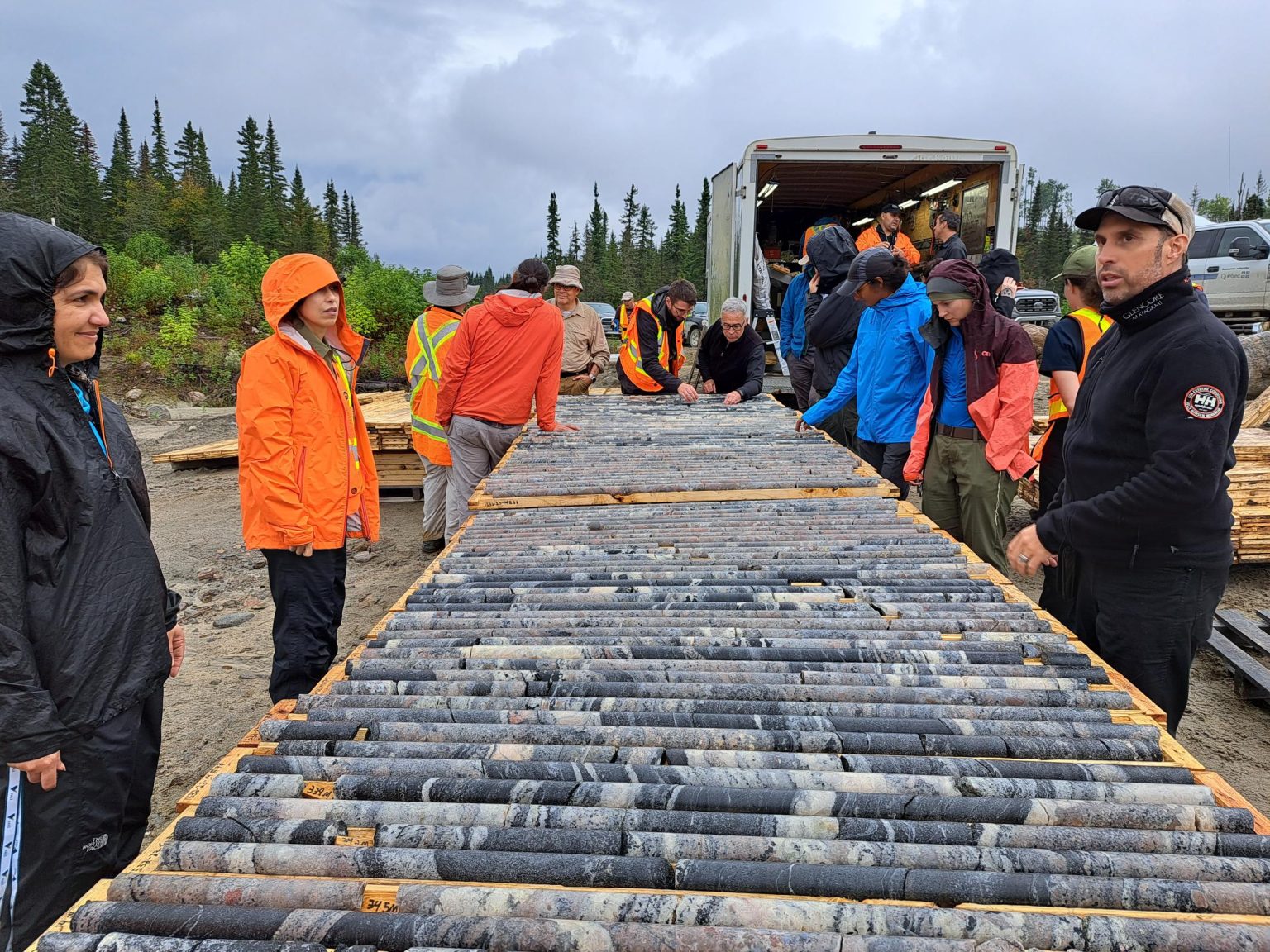AUSTRALIA –
Gekko Systems has successfully completed the first stage of the Hope Bay Project. The major milestone encompasses the design, manufacture and shipping of Gekko’s Python process plant with the capacity to treat 1,000 t/d, and a concentrate treatment plant capable of treating up to 300,000 oz per annum.
Gekko was required to meet strict deadlines for the equipment to arrive at Roberts Bay Port by August 2016 as sea access is only possible each summer for up to 10 weeks. Consequently, the plant had to be designed, built and shipped on schedule to meet the tight delivery window.
[caption id="attachment_1003715508" align="alignleft" width="300"]
 Gekko gold recovery plant sits in containers at the Hope Bay mine site earlier this summer.
Gekko gold recovery plant sits in containers at the Hope Bay mine site earlier this summer.[/caption]
“This is a fantastic milestone for Gekko’s contribution to the TMAC project. The entire Gekko team worked together to design, procure, construct and dispatch the processing plant with the support of flexible and responsive supply chain partners. The positive and interactive relationship with the TMAC team has paved the way for a successful installation and commissioning phase of the project currently underway.” said Tony Stone, Gekko’s group manager of operations.
The success of this first stage of the project was made possible through Gekko’s modular and containerised approach to plant design. This allowed for construction, assembly and factory commissioning in Ballarat prior to the shipment, using 200 containers.
As outside temperatures regularly drop to –50°C, the plant and equipment needed to be designed to withstand the harsh environmental conditions and Canadian standards to ensure the high performance expectations are achieved.
The plant will be installed inside a purpose built structure approximately 150 metres long by 50 metres wide with commissioning of the plant expected in mid-December 2016. The low height plant design allowed the building height to be lowered by up to 10 metres, which further reduced construction, heating and operating costs and improved maintenance access.
The plant will reach its maximum capacity of 2,000 t/d in late 2017, when the second Python is estimated to be commissioned and fully operational.
Watch the
YouTube video about Gekko’s contribution to the Hope Bay project or visit
www.Gekkos.com.

 Gekko gold recovery plant sits in containers at the Hope Bay mine site earlier this summer.[/caption]
“This is a fantastic milestone for Gekko’s contribution to the TMAC project. The entire Gekko team worked together to design, procure, construct and dispatch the processing plant with the support of flexible and responsive supply chain partners. The positive and interactive relationship with the TMAC team has paved the way for a successful installation and commissioning phase of the project currently underway.” said Tony Stone, Gekko’s group manager of operations.
The success of this first stage of the project was made possible through Gekko’s modular and containerised approach to plant design. This allowed for construction, assembly and factory commissioning in Ballarat prior to the shipment, using 200 containers.
As outside temperatures regularly drop to –50°C, the plant and equipment needed to be designed to withstand the harsh environmental conditions and Canadian standards to ensure the high performance expectations are achieved.
The plant will be installed inside a purpose built structure approximately 150 metres long by 50 metres wide with commissioning of the plant expected in mid-December 2016. The low height plant design allowed the building height to be lowered by up to 10 metres, which further reduced construction, heating and operating costs and improved maintenance access.
The plant will reach its maximum capacity of 2,000 t/d in late 2017, when the second Python is estimated to be commissioned and fully operational.
Watch the
Gekko gold recovery plant sits in containers at the Hope Bay mine site earlier this summer.[/caption]
“This is a fantastic milestone for Gekko’s contribution to the TMAC project. The entire Gekko team worked together to design, procure, construct and dispatch the processing plant with the support of flexible and responsive supply chain partners. The positive and interactive relationship with the TMAC team has paved the way for a successful installation and commissioning phase of the project currently underway.” said Tony Stone, Gekko’s group manager of operations.
The success of this first stage of the project was made possible through Gekko’s modular and containerised approach to plant design. This allowed for construction, assembly and factory commissioning in Ballarat prior to the shipment, using 200 containers.
As outside temperatures regularly drop to –50°C, the plant and equipment needed to be designed to withstand the harsh environmental conditions and Canadian standards to ensure the high performance expectations are achieved.
The plant will be installed inside a purpose built structure approximately 150 metres long by 50 metres wide with commissioning of the plant expected in mid-December 2016. The low height plant design allowed the building height to be lowered by up to 10 metres, which further reduced construction, heating and operating costs and improved maintenance access.
The plant will reach its maximum capacity of 2,000 t/d in late 2017, when the second Python is estimated to be commissioned and fully operational.
Watch the 




Comments